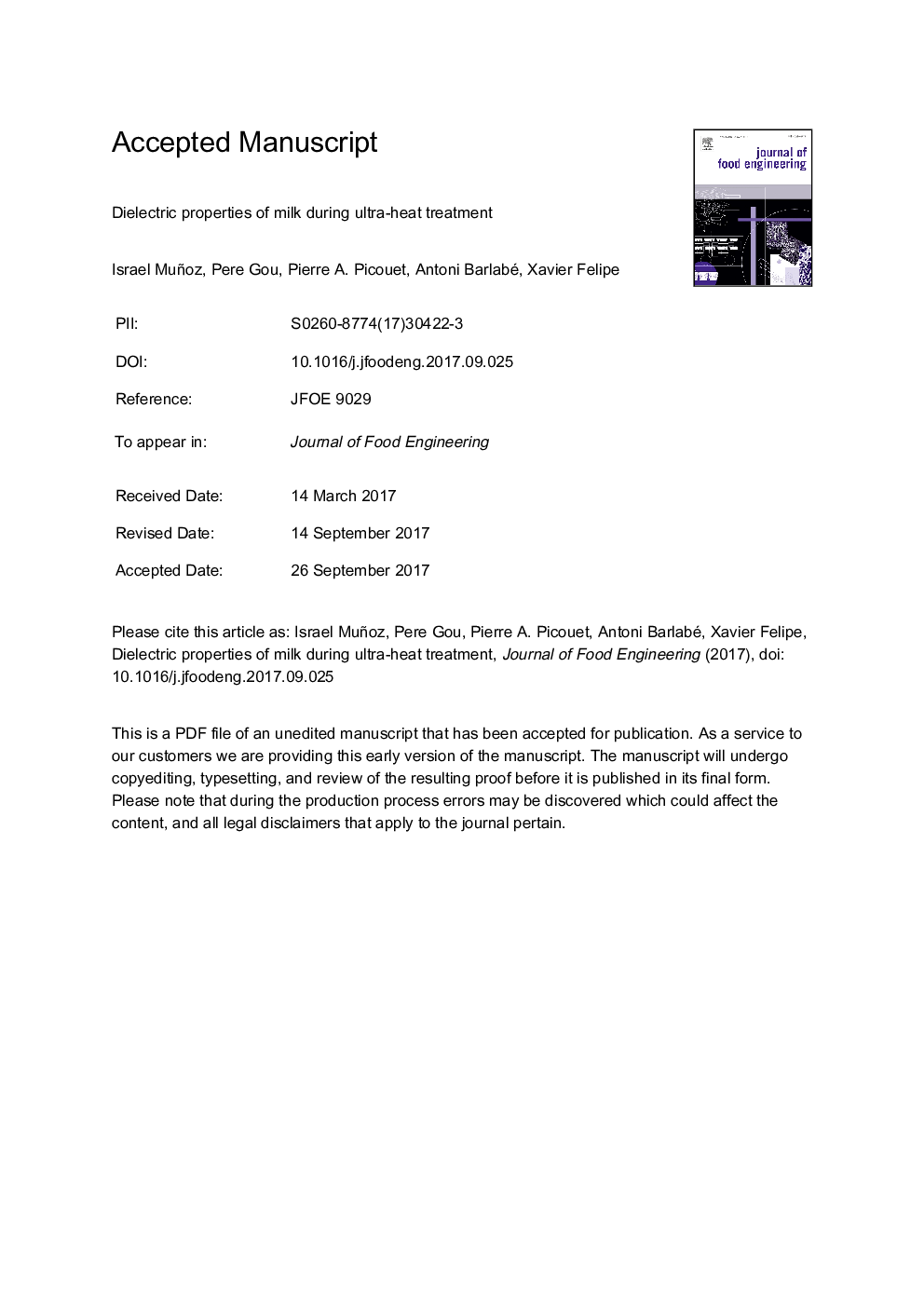| Article ID | Journal | Published Year | Pages | File Type |
|---|---|---|---|---|
| 6664862 | Journal of Food Engineering | 2018 | 32 Pages |
Abstract
Dielectric properties are important for predicting dielectric heating of foodstuffs. The dielectric properties of three types of milk (raw, skimmed and concentrated non-fat) were analyzed at high frequencies between 10 MHz and 2450 MHz for producing temperatures between 20 °C and 150 °C. The study of cow milk dielectric constants (εⲠand εâ³) at conditions above 100 °C is needed to evaluate dielectric sterilization of milk. The dielectric constant (εâ²) was found to decrease with frequency at all temperatures but increase with temperature at low frequencies and decrease with temperature at high frequencies. The dielectric loss factor (εâ³) decreased with frequency and increased with temperature in almost the entire range of frequencies. Ionic conduction was the dominant mechanism across most of the frequency range. For milk samples with higher ash content (related to salt content), εⲠwas higher at low frequencies and lower at high frequencies, whereas εⳠwas higher for all frequencies. Penetration depth was lower for milk samples with higher ash content.
Related Topics
Physical Sciences and Engineering
Chemical Engineering
Chemical Engineering (General)
Authors
Israel Muñoz, Pere Gou, Pierre A. Picouet, Antoni Barlabé, Xavier Felipe,
